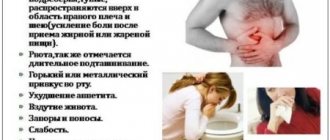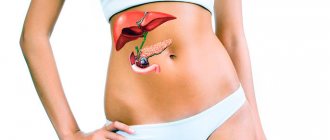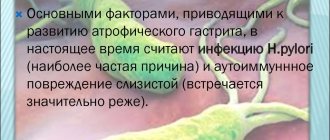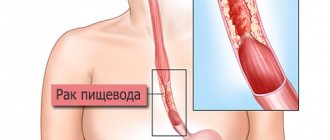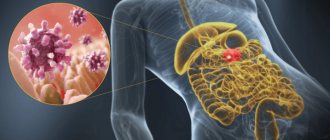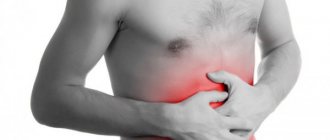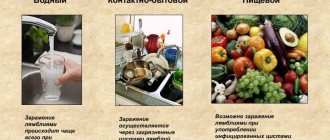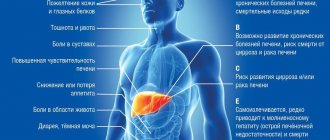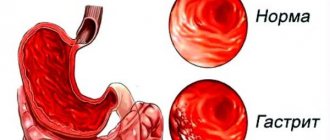Calculous cholecystitis – one of the most common diseases of the gastrointestinal tract among the adult population.
Treatment of the disease is selected depending on the form of its course. Untimely treatment of acute calculous cholecystitis can lead to the development of life-threatening complications.
What is calculous cholecystitis
Calculous cholecystitis - what it is and how the disease can progress can be fully understood only by understanding the mechanisms of its development. Pathology refers to inflammation of the walls of the gallbladder caused by the accumulation of stones in the cavity of the organ. These stones consist of cholesterol, calcium impurities, and bile pigments.
The inflammatory reaction in the gallbladder is a consequence of:
- Irritation of the mucous walls of the organ by the formed stones. Large stones put pressure on the walls of the gallbladder, which ultimately first causes an inflammatory reaction, then atrophy and tissue necrosis.
- Stagnation of bile. The stones located in the cavity of the organ interfere with the normal outflow of bile, resulting in its stagnation, and conditions suitable for the proliferation of pathogenic microflora are created.
- Organ infection. Pathogenic microorganisms (bacteria, E. coli) enter the gallbladder along with the blood, lymph, or duodenum. In the accumulated bile they quickly multiply, which further worsens the course of the inflammatory process. The risk of microbes entering the organ cavity is increased if there are chronic infections in the body.
Calculous cholecystitis is considered one of the forms of cholelithiasis - cholelithiasis. Both diseases have the same development mechanisms and similar symptoms. Typically, the term calculous cholecystitis refers to cholelithiasis with a chronic course.
Pathology occurs almost 5 times more often in women compared to male patients. This is mainly due to the hormonal characteristics of the female body.
Causes of chronic non-calculous cholecystitis
As a rule, the source of progression of non-calculous cholecystitis is often called an infection that has penetrated the gallbladder. In particular, exposure to the following opportunistic agents leads to an inflammatory process in the organ mucosa without the formation of stones:
- Proteus (penneri, mirabilis, vulgaris are dangerous for humans);
- staphylococcal bacterium;
- pseudomonas;
- streptococcal bacteria;
- Escherichia coli;
- fecal enterococcus.
What is chronic cholecystitis and its types
The route through which bacteria enter the gallbladder is through the intestines. Therefore, people with infectious intestinal diseases and inflammatory liver pathologies are more likely to develop non-calculous cholecystitis. They can also enter the organ through the bloodstream and lymph.
The second source that causes the disease is stagnation of bile. This process can develop for several reasons:
- decreased tone of the gallbladder, as well as changes in its shape and size;
- reluctance to move, play sports, sedentary work;
- poor nutrition;
- the period of gestation in the last trimester, when the uterus compresses neighboring organs;
- prolapse of internal organs;
- heavy and rare meals.
What is acalculous cholecystitis?
Additional causes of the development of chronic non-calculous cholecystitis
In addition, people with thyroid pathologies, gallbladder motility disorders, and diseases caused by the presence of invasions in the body are at risk.
At the primary stage of non-calculous cholecystitis, motor activity, that is, organ motility, is impaired. Next, the infection attaches and a sluggish inflammatory process starts. It can be localized not only in the mucous membrane of the gallbladder, but also in its ducts. As a result, the functioning of the organ is disrupted, its functions are lost, and bile outflow is delayed.
Chronic noncalculous cholecystitis without biliary sludge
In the future, its deformation is observed. In exceptional cases, due to untimely treatment, adhesions form with nearby organs.
Important! According to medical statistics, acalculous cholecystitis affects 4 times more men than women.
Factors in the pathogenesis of chronic cholecystitis
Types of calculous cholecystitis
According to the duration of the course, calculous cholecystitis is divided into:
- Spicy. It is characterized by intense pain resulting from blockage of the bile ducts or the cervix of the organ by a stone.
- Chronic. It occurs with periods of exacerbations and remissions.
Acute calculous cholecystitis is usually considered as a sharp manifestation of a latent, sluggish process. This form of the disease is divided into three:
- Catarrhal. The main manifestations are pain in the right side, aggravated by eating fatty foods. Vomiting is possible, but it does not make you feel better. Upon palpation, an enlarged gallbladder is determined.
- Phlegmonous. It develops due to the appearance of ulcers on the mucous walls and the accumulation of pus in the cavity. The pain is severe, aggravated by coughing and changing body posture. In most cases, there is a high temperature, chills, and symptoms of intoxication. Palpation of the bladder is painful.
- Gangrenous. Occurs with the progression of phlegmonous cholecystitis. The walls of the bladder partially or completely die, after which gangrene develops and perforation occurs. The main signs are increasing pain, high fever, yellowness of the sclera and skin.
Gangrenous calculous cholecystitis is the most severe variant of the development of the disease. The overflow of bile after perforation of the walls of the organ leads to peritonitis; in such a situation, emergency surgery should be performed on the patient in the first hours.
Chronic calculous cholecystitis can occur with rare and frequent exacerbations. The course of the disease can be monotonous, that is, pain, nausea and a number of other manifestations of the disease are not clearly expressed, but are present almost constantly.
Classification
Based on the presence or absence of previously acute attacks, cholecystitis can be divided into:
- acute, when manifestations of cholecystitis appeared for the first time, in an acute form;
- chronic, which in turn is divided into phases: exacerbation (the manifestations are no different from acute);
- remission (manifestations are minimal and most often associated with errors in diet; this is a low-grade inflammation in the bladder wall that can last for years).
Depending on the number of exacerbations of the disease along the course, chronic non-calculous cholecystitis is distinguished:
- mild form, exacerbations no more than 2 times a year;
- moderate form, 2-5 exacerbations per year;
- severe form, more than 5 exacerbations per year.
Causes
The main cause of calculous cholecystitis is the presence of stones in the bladder cavity. Their formation, in turn, is facilitated by:
- Unhealthy eating habits - eating excessive amounts of carbohydrate and fatty foods;
- strict diets, long intervals between meals;
- physical inactivity;
- viral infection of the liver;
- gastrointestinal tract injuries;
- postoperative complications after abdominal surgery on internal organs;
- predisposition to the disease, transmitted at the genetic level;
- endocrine disruptions caused by obesity, diabetes, taking hormonal drugs, menopause.
Diagnosis of non-calculous inflammation of the gallbladder
The main study that allows us to establish an accurate diagnosis in most cases is an ultrasound of the digestive system. Data on the thickness and echogenicity of the gallbladder wall, its contents, volume, the presence or absence of bridges, bends, information about the peristalsis of this organ - all this allows the doctor to draw a conclusion about its condition. If the doctor remains in doubt, he will prescribe cholecystography - a contrast X-ray examination that will show stones, even if they are not visible on ultrasound.
At the initial stage of the examination, blood tests are prescribed - general and biochemical. This is done to distinguish non-calculous inflammation of the gallbladder from other diseases that can manifest themselves in the same way, to assess liver function and the degree of the inflammatory process.
Symptoms of calculous cholecystitis
Acute calculous cholecystitis or exacerbation of a chronic process occurs as biliary colic. Main symptoms:
- acute pain in the stomach and on the right under the ribs with irradiation to the upper back, heart area;
- febrile temperature (37.2-37.5 degrees);
- severe sweating;
- chills;
- nausea;
- vomiting – bile is present in the vomit;
- pallor of the skin.
Pain during exacerbation of the pathology is sharp, severe, and lasts up to several hours.
With chronic cholecystitis, the painful sensations are dull, aching, and intensify periodically. The disease is also characterized by nausea, a bitter taste in the mouth, and heaviness in the right hypochondrium.
Digestive disorders can manifest themselves as alternating loose stools and persistent constipation, flatulence. Symptoms in adults intensify after consuming alcohol, fatty and smoked foods, and during stressful situations.
Treatment
Treatment of this disease, like most diseases in gastroenterology, first of all begins with the formation of a lifestyle:
- Patients are advised to eat a diet limiting fatty, fried, spicy, smoked, alcohol, and foods that cause bloating, especially during periods of exacerbation; meals should be frequent and divided; adequate drinking regime (according to international studies, from 2 liters of clean water per day);
- Adequate physical activity;
- Timely treatment of inflammatory diseases;
- Limitation of psycho-emotional stress: formation of a work and rest regime;
- Enzyme preparations in courses (Festal, Creon, Pancreatin, Mezim) for a month, 2 times a year or during and after an exacerbation of the disease;
- Choleretic drugs based on ursodeoxycholic acid in courses (artichoke preparations).
Treatment of acute forms of cholecystitis, depending on its severity, is carried out at home or, more often, in an inpatient setting. It includes:
- antibiotic therapy, according to the sensitivity of the pathogen;
- detoxification therapy (removal of toxins - waste products of microorganisms, from the blood);
- reduction of pain; antispasmodics are often used for this purpose: Drotaverine, Papaverine, Spasmaton.
In severe forms of cholecystitis and frequent exacerbations, surgery is recommended: cholecystectomy (removal of the gallbladder). More often, operations are prescribed as planned during the interictal, so-called “cold” period, sometimes operations are performed in the acute period for health reasons: in case of dissection or rupture of the bladder wall.
Types of cholecystectomies: laparoscopic and open.
Diagnostics
The diagnosis of calculous cholecystitis is made after a thorough examination, which includes:
- Interview and examination of the patient. The duration of the disease, the main symptoms, and the nature of nutrition are determined.
- Ultrasound. Scanning the organ allows you to determine the presence of stones in the bladder, their size, and the thickness of the walls of the organ.
- CT. Computed tomography is most often prescribed if the results of other examination methods are uninformative.
- Radiography. Conventional plain radiography is mainly used to detect complications. Endoscopic radiography can detect small stones in the bile ducts. If the stones are small, they are removed immediately during endoscopic radiography.
Additionally, laboratory tests are prescribed:
- in a general blood test during an exacerbation, the ESR increases and leukocytosis is detected;
- biochemistry shows liver tests, total cholesterol.
In the diagnostic process, it is necessary to differentiate calculous cholecystitis from pathologies with similar symptoms. This applies to common cholecystitis, pancreatitis, renal colic, gastroduodenitis, and liver inflammation.
Sometimes angina pectoris and myocardial infarction occur with the symptoms of biliary colic.
How to treat cholecystitis
First of all, the patient must be provided with bed rest. Acute and chronic acalculous cholecystitis should be treated by strictly following the instructions of the gastroenterologist. It is necessary to comprehensively solve the following problems:
- Alleviate the patient's condition by eliminating painful colic.
- Eliminate stagnation of bile.
- Extinguish the non-calculous inflammatory process in the bladder.
These goals can be achieved using the following therapeutic methods:
- therapeutic diet;
- drug therapy;
- physiotherapeutic procedures;
- herbal medicine;
- hydrotherapy.
How is exacerbation of cholecystitis treated?
If the patient's chronic illness history is replete with frequent episodes when a non-calculous type of illness is activated, hospitalization is necessary. Strict bed rest and refusal to eat for several days are prescribed. Drinking should be moderate, in small portions, so as not to provoke vomiting. The patient is given a complex of medications (tablets, injections). Later, when non-calculous, chronic cholecystitis passes the acute phase, electrophoresis and mud applications are used. In case of suppuration or blockage of the bile duct, the organ is urgently removed.
Medicines
Drug therapy is complex. For non-calculous cholecystitis, drugs from the following groups are used to eliminate pathology:
- analgesics that eliminate painful colic - Ketonal, Baralgin, Sedalgin;
- antibiotics – Ampicillin, Rifampicin, Erythromycin;
- antispasmodics, relaxing bile ducts - No-shpa, Papaverine, Platiphylline, Atropine;
- antiemetics - Cerucal, Ondansetron, Motilium;
- choleretic drugs for cholecystitis - Hologon, Cholenzym, Nikodin, Tsikvalon;
- enzymes that activate the motility of the digestive tract - Mezim Forte, Festal, Creon, Panzinorm;
- probiotics that restore beneficial intestinal microorganisms - Linex, Bifiform, Bifidumbacterin, Enterol, BioFlora.
Diet
Therapeutic nutrition is the most important condition for getting rid of this disease. Acute non-calculous inflammatory process requires a gentle diet. Warm liquid soups, cereals, and jellies are prescribed. Gradually pureed meat, fish, dairy, vegetable and fruit dishes are included in the diet. If a patient develops a non-calculous type of inflammation of the gallbladder, it is necessary to eat food often, but in small portions.
Should be permanently excluded:
- fatty, fried foods;
- spicy seasonings;
- egg yolks;
- nuts;
- raw vegetables and fruits;
- baked goods;
- any alcoholic and carbonated drinks.
Traditional treatment
Medicinal plant preparations are gentle and have minimal side effects. Infusions and herbal decoctions are good for treating non-calculous types of bladder damage. Folk remedies dilute stagnant bile and activate its outflow. In addition, they suppress the development of infection and relieve non-calculous inflammatory process. However, such drugs can be used only after cholecystitis has passed the acute stage. They should not be used during pregnancy or given to a small child.
Warm herbal infusions are often taken. Brew 8-10 g of dry raw material with a glass of boiling water and drink half a glass three times a day before meals for 3-4 weeks. Particularly popular:
- corn silk;
- parsley herb;
- immortelle flowers.
